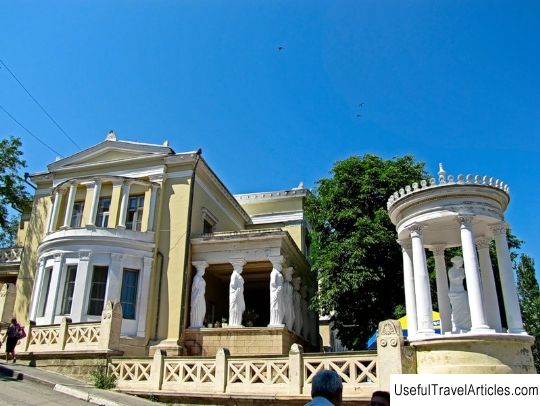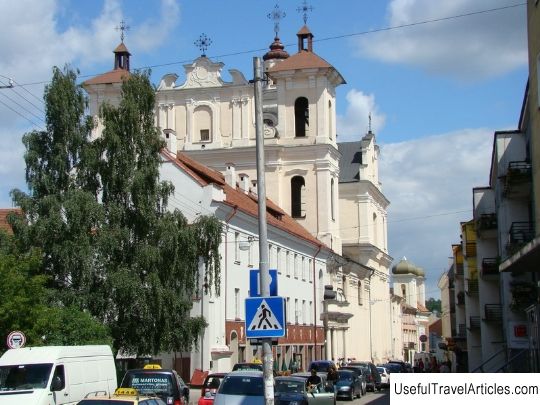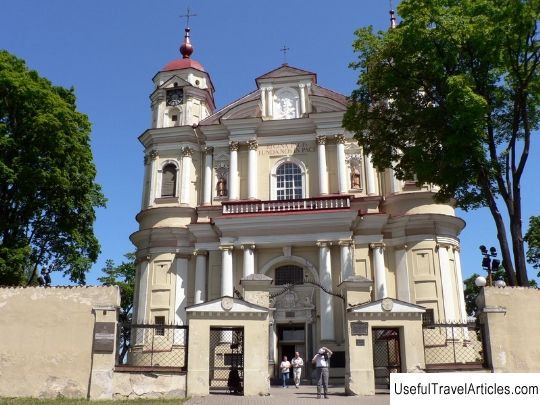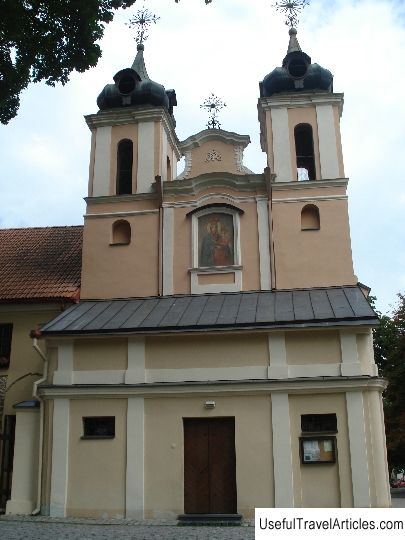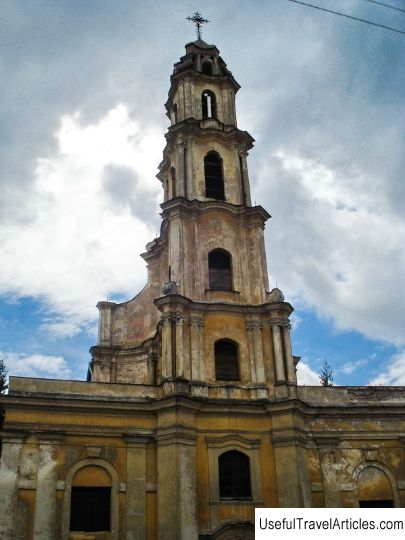Church of the Holy Trinity (Svc. Trejybes baznycia) description and photos - Lithuania: Vilnius
Rating: 8,2/10 (1433 votes) 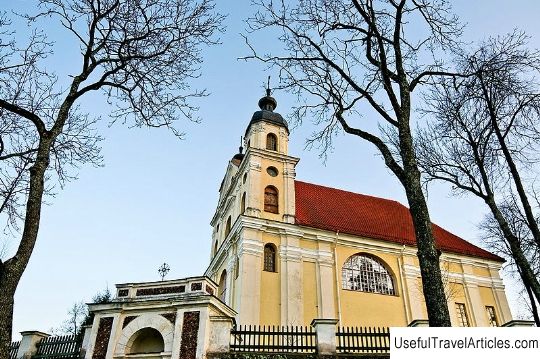
Church of the Holy Trinity (Svc. Trejybes baznycia) description and photos - Lithuania: Vilnius. Detailed information about the attraction. Description, photographs and a map showing the nearest significant objects. The name in English is Svc. Trejybes baznycia. Photo and descriptionTradition says that at the very end of the 17th century, during the reign of Bishop Konstantin Brzhostovsky, Trinitarian monks decided to settle in the area. For this reason, this area was called Trinopolis, that is, the city of Trinitarians. They decided to build a church and, with it, a monastery. The temple was erected in the period 1695-1709 and the architect was, presumably, Petro Putini. According to other sources, the temple and the monastery were erected in 1703 by Bishop Konstantin Brzhostovsky himself. The Church of the Holy Trinity, located in the city of Vilnius, is a Roman Catholic church dedicated to the glory of the Holy Trinity. The building of the church itself and the buildings of the adjacent former Trinitarian monastery are monuments of architecture and history. They are located in the northern part of the city, on the right bank of the Viliya river. Initially, the temple was wooden. In 1710, a devastating fire broke out in the temple, all buildings burned down. Then it was decided to build a stone church and monastery buildings. Construction ended in 1722. It was then that the upper tiers of the towers were built. In 1750-1760, the temple was reconstructed, as a result of which it acquired elements of the late Baroque. During the Napoleonic occupation, a military hospital of the French army was located in the temple. Like all other temples or other buildings in which French soldiers were quartered, the temple was badly damaged. The interior of the church suffered the most. In 1832, as a result of the Polish uprising, the monastery was abolished, and the church was closed. Ten years later, the Orthodox Metropolitan petitioned to receive a church for the use of his believers. In 1848, the buildings were transferred to the bishop's house and the Orthodox monastery. The church was renamed into the Church of St. Joseph the Betrothed, it was reconstructed. A small Orthodox cemetery was located on the territory of the former monastery. The old chapel nearby was repaired and turned into a cemetery church. In 1917-1918, the temple complex was returned to Catholics. A shelter for orphans and a Lithuanian school were located in the buildings of the monastery. In 1926, the summer residence of the archbishop was located in the monastery. At the end of the Second World War, the Soviet government closed and nationalized the temple. At first, a hospital was located here, and later - a tourist base. In 1992, the complex was again returned to the Catholics, their first owners. It was decided to house the novitiate of the Vilnius Archdiocese and the center of recollections in the monastery. In 1997 the church was renovated and consecrated. The Church of the Holy Trinity was built in the late Baroque architectural style. The facade of the church is two-tiered, divided by various cornices and pilasters. On the right and left sides, directly from the second tier of the facade, two towers rise. A triangular pediment is built between them. Painted in yellow - white, under a red-brown roof, the church looks majestic and strict, like all the architectural masterpieces of the late Baroque. The complex is fenced off with a metal fence. During the change of owners, the original decoration of the temple was destroyed or lost. The only historical piece of the interior is a wooden sculpture taken from the facade of the Vilnius Church of St. Catherine. The sculpture is made in the Baroque style. Studying the events that took place in the life of the Lithuanian people and the Lithuanian state, one can draw a clear parallel with the fate of the Church of the Holy Trinity. It burned down, closed and reopened, changed its owners, came to desolation and again recovered. However, he retained both his style and his greatness.      We also recommend reading Gobustan State Historical and Artistic Reserve description and photos - Azerbaijan Topic: Church of the Holy Trinity (Svc. Trejybes baznycia) description and photos - Lithuania: Vilnius. |
